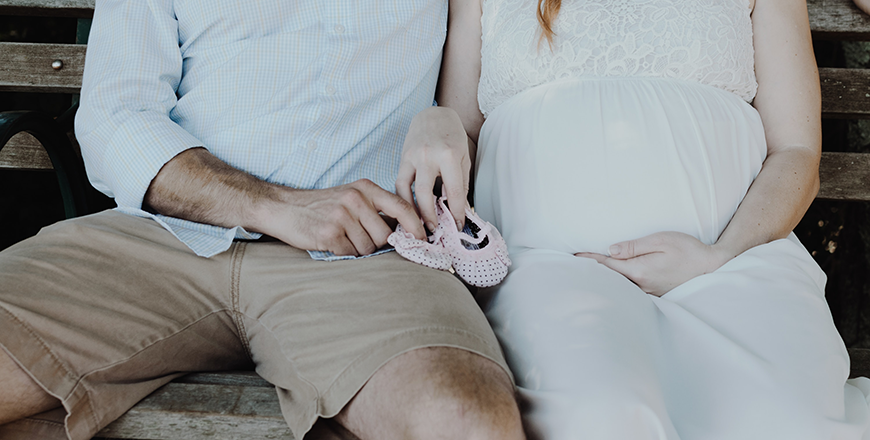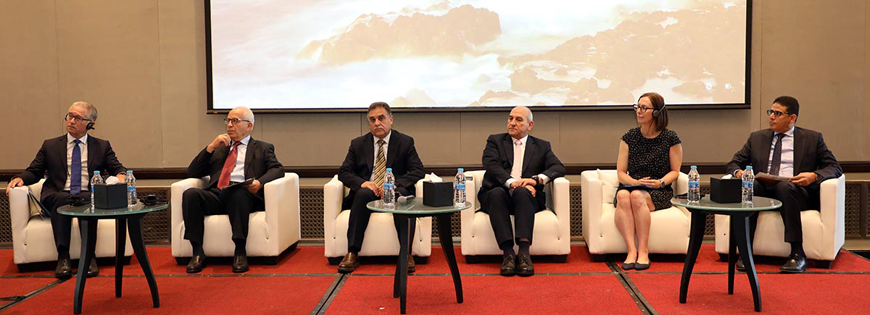You are here
Kingdom’s reproduction rate plunges to low of 2.6% in 2023 — DoS
By Maria Weldali - Nov 17,2023 - Last updated at Nov 17,2023

The DoS showed a decline in the overall fertility rate in Jordan by 1 per cent since the previous 2017-2018 survey which recorded a 2.7 birth rate (Photo courtesy of unsplash)
AMMAN — The birth rate for women in Jordan for 2023 reached 2.6 children for every woman in the reproductive age, with rural areas recording a higher birth rate of 2.8 compared with urban areas, according to the Department of Statistics (DoS).
The results released by the DoS showed a decline in the overall fertility rate in Jordan by 1 per cent since the previous 2017-2018 survey which recorded a 2.7 birth rate, the Jordan News Agency, Petra, reported.
The DoS presented the preliminary insights at the launch seminar of the 2023 Jordan Population and Family Health Survey (JPFHS), during which selected findings from the JPFHS were released. A thorough analysis of the data will be released as a conclusive report during the second quarter of 2024.
The seminar was primarily attended by representatives of DoS, the Ministry of Health, UNICEF, USAID, WFP, WHO and UNFPA.
The survey showed that “a woman in Jordan will give birth to less than one child [0.6] by age 25 years and approximately two children [2.1] by age 35”.
The eighth JPFHS edition provided up-to-date estimates of key demographic and health indicators.
This was achieved by collecting data at the national level, exploring the direct and indirect factors that impact the levels of and trends in fertility and childhood mortality across the Kingdom.
The survey presented data related to key aspects of family health, which includes immunisation of children and maternity care indicators. It also collected data on the knowledge and attitudes of women and men regarding sexually transmitted diseases.
According to the survey, a total of 20,054 households were selected for the sample, of which 19,475 were interviewed, with a response rate of 98 per cent.” Noting that fertility rates are low for the 15-19 age group, whereas 17 births per 1,000 women of this age were recorded during the 3- year period prior to the survey (expanding from 2020-2023).
Data collection took place from January 2023 up until June 2023, representing nation-wide results from urban and rural areas in all of the Kingdom’s governorates numbering 12. The sample took into consideration four nationality scopes, including the Jordanian population, the Syrian population in camps, the Syrian population living outside the camps, and the population of other nationalities.
Speaking during the launch ceremony of the results of the JPFHS for 2023, DoS Director General Haidar Fraihat underlined the importance of statistical data, a primary source for preparing national plans and policies and monitoring progress towards the achievement of several objectives including the 2023 Sustainable Development Goals.
Adding that “The main objective of this survey is to provide comprehensive data relating to population reproduction, childhood mortality and other related topics,”
Fraihat announced some of the future plans intended to be implemented as part of the Economic Modernisation Vision, he added that the government through the DoS seeks to establish a national data centre to facilitate statistical data users to access detailed data generated by reports.
For his part, Raed Shboul, the Secretary-General at the Ministry of Health, said that “the ministry provides 44 per cent of the reproductive health services for the public sector in 520 health centres and 31 public hospitals across the Kingdom,” pointing that the survey contributes to comprehensive and sustainable development.
The survey also showed that fertility is higher among women living in refugee camps. As for teenage pregnancy, it varies from a low of one per cent in Ma’an and Aqaba to a high of five per cent in Zarqa.
As for the vaccination coverage, data presented in the survey showed that 92 per cent of children aged between 12-23 months received all their basic vaccinations, while only 1 per cent of children of the same age did not receive any vaccination.
Filed work was conducted by 30 field teams, each consisting of one female supervisor, three female interviewers, one male interviewer, one biomarker technician and two drivers.
The JPFHS was conducted in 1990, 1997, 2002, 2007, 2009, 2012 and 2017-2018. For the 2023 edition, financial support was provided by the government, USAID, UNICEF, UNFPA, WHO, and WFP. As for the technical assistance, it was extended by the ICF through the DHS programme, a USAID-funded project providing technical support in implementing population and health surveys in multiple countries globally.
Related Articles
AMMAN — Shorter time span for childbearing, urbanised way of living, people’s nutritional approaches and cultural shifts are among the facto
AMMAN — This year’s World Population Day, annually marked on July 11, will be celebrated under the theme “Rights and Choices are the Answer:
AMMAN — The average family size in Jordan is 4.8 members, with 15 per cent of households headed by women, and one-third of family members ar
















